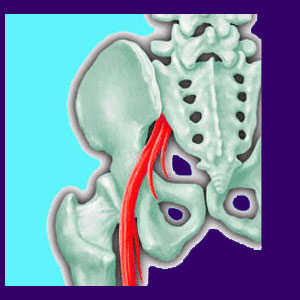
Sciatic nerve treatment is a medical specialty often taken up by orthopedists, neurologists and chiropractors. Being that sciatica is such a widespread problem and is also incredibly profitable to treat, it is easy to see why more and more doctors are getting on board this lucrative gravy train.
For instances of chronic sciatica, there are a seemingly endless supply of treatments available, encompassing traditional medical, complementary medical and truly alternative healthcare practices. There is no shortage of different approaches to care, since doctors each have their own thoughts about the true sources of sciatica suffering.
As many wise physicians have said over the years: Diversity of treatment is usually an indicator of incorrect diagnosis. When it comes to sciatica, this is often the spot-on truth.
A good doctor will always start a patient on a treatment program using the most conservative therapies first. If the condition does not respond, then the treatments can progress towards more drastic measures. Just remember, pain conditions which do not respond well to appropriate conservative treatments often do not resolve through more dangerous and invasive modalities either. Be very careful when pursuing surgery as a potential cure for any back, neck or leg pain syndrome.
This article provides a view of the most commonly utilized treatments for sciatica and pseudosciatica.
Sciatic Nerve Treatment Choices
Some of the most often prescribed therapies for sciatica include the following options:
Physical therapy is great for rehabilitation purposes, but falls short when it comes to treating many varieties of back ache. Sciatica pre-supposes some form of nerve compression in the lumbar spine. How are exercises supposed to resolve this? When patients see great transient results from PT, this is usually because they are suffering from some soft tissue source of sciatica, such as piriformis syndrome, or have been victimized by a regional oxygen deprivation syndrome. PT is great for increasing local circulation and fighting off the effects of ischemia temporarily.
Pain management drugs are the easiest and most popular method of care. Patients pop pills and hope the pain will go away. Doctors make money, patients don’t have to do much. All seems well. Unless, of course, you consider that these drugs are toxic, addictive and have basically degenerated our healthcare system into an utter mess of chronic suffering.
Chiropractic ranges in its effectiveness, depending on the diagnosed source of symptoms. For some spinal issues, chiropractic offers great natural relief and may even provide a rare cure. However, for other conditions, the idea of vertebral manipulation seems illogical and is definitely more of a financial boon to the care provider than an effective therapy for the patient.
Epidural injections are usually just more of the same old drugs, this time stuffed into a needle, rather than a pill. They offer a temporary fix at best; a poisonous cocktail of suffering at worst. There is a considerable risk of complications from epidurals including infection and spinal fluid leaks. The best epidurals can hope to achieve is a few weeks or months of symptom reduction. These therapies almost never provide a lasting cure.
Back surgery represents the final frontier of sciatica care. There are so many different approaches to invasive sciatic nerve treatment, ranging from discectomy to laminectomy to disc replacement to spinal fusion. Each diagnostic conclusion will have its own unique surgical solutions. When the diagnosis is sound, surgery may help to actually end the pain for good. However, curative statistics for most procedures and conditions are not promising. Never forget, doctors will deem a procedure successful if the goal of surgery is achieved, not if the procedure provides pain relief. For example, if a disc is actually removed in a discectomy, the procedure is said to be successful. The fact that the patient may suffer a drastic downward spiral of pain which may lead to their death over months of agony is incidental.
Sciatic Nerve Therapy Overview
Sciatica treatment should match the level of pain experienced. If the pain is tolerable, than it would be wise to avoid any treatment that will have worse side effects than the condition itself. Drugs can be addicting and cause a variety of possible health complications. Surgery is not guaranteed to work as an effective sciatic nerve treatment and has many significant risks.
Sciatic nerve treatments usually work better to relieve leg pain than actual back pain. That’s the good news. The bad news is that chronic sciatica is very common and can resist many attempts at treatment. For chronic sciatic pain, you might want to consider an alternative treatment for sciatica relief. Sciatica is one of the most common and least understood causes of back pain.
Remember, there is not always some definitive anatomical reason for pain to exist. Sometimes approaching care from a mindbody perspective might offer renewed hope for patients who have just about lost their dream of an enduring cure.




